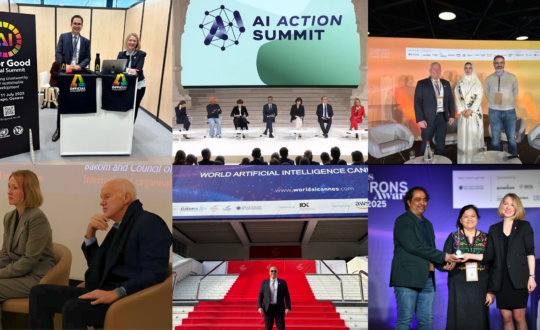The AI for Good Global Summit 2024, held in Geneva, brought together leaders and innovators from various sectors to discuss the transformative potential of artificial intelligence (AI). Among the distinguished speakers was Vincent Vanhoucke, Senior Director of Robotics at Google DeepMind. Vanhoucke provided an in-depth perspective on the transformative power of generative AI (gen) in both the digital and physical worlds. Speaking at the summit, Vanhoucke highlighted the potential of AI to revolutionize various sectors and contribute significantly to achieving the United Nations Sustainable Development Goals (SDGs).
AI has long been a part of the tech and business world, gradually integrating into various aspects of our digital lives. While AI has made significant strides in the digital realm, its application in the physical world has been limited.
But the integration of AI into the physical world is essential for addressing real-world problems and achieving the SDGs. Vanhoucke emphasized that while AI has made significant strides in the digital realm, its application in the physical world has been limited.
“If we want to solve [the SDGs], we’re going to have to get physical,” he asserted.
This means that AI must extend beyond digital impacts to solve “real problems for real people”. This shift is happening rapidly, with generative AI increasingly becoming central to all aspects of robotics and automation.
Generative AI’s role in robotics is particularly noteworthy. Vanhoucke explained that gen techniques are at the heart of current research in robotics and automation, poised to make a significant transition into industry. This integration allows robots to operate in complex, uncontrolled environments, rather than being confined to narrowly defined tasks. The ability to function in such dynamic settings is crucial for the next generation of robots.
One of the most exciting prospects of this AI revolution is the potential for robots to communicate using natural language. Vanhoucke highlighted that embedding language models within robots facilitates more intuitive human-robot interactions.
“The natural language, the language that we both speak, is the native language by which you interact with your robots. […] This idea […] really brings humans back to the center of the equation,” he said.
This capability not only simplifies communication but also builds trust, as robots can clearly articulate their actions and intentions. By using natural language, robots can describe their own actions in a way that is understandable to humans, reducing the perceived “black box” nature of AI.
The ability of generative AI to generalize across various scenarios is another critical advancement. This capability is essential for robots operating in dynamic, real-world environments, such as self-driving cars navigating city streets.
“Gen is really about generalization. It’s about bringing generality to scenarios and enabling common sense understanding of scenarios that the robot has never encountered before, ” Vanhoucke explained.
This ability to adapt to ever-changing conditions is crucial for deploying robots in everyday human settings, where they can interact and respond to unpredictable situations.
Vanhoucke also expressed his excitement about the convergence of different AI technologies, such as speech recognition, computer vision, and machine translation, which were previously siloed into distinct fields and that started to converge with deep learning about a decade ago.
“With generative AI, we’re going one step further in that unification in the sense that it’s now the same model that does perception, translation, speech recognition, audio generation. It is one big, unified model that really brings all the synergies between the different aspects of intelligence together,” he noted.
This integration allows for comprehensive reasoning and action, significantly expanding AI’s potential applications.
The convergence of these technologies means that AI can now reason about the visual aspects of a scene, act upon it, discuss it, and make inferences based on common sense understanding. This holistic approach opens up new avenues for applications that go beyond just recognizing speech or objects. For instance, a robot equipped with these capabilities can better understand its environment and interact with it in a more meaningful way, providing significant benefits across various industries.
As generative AI continues to advance, its integration into robotics and automation promises to transform numerous sectors and enhance human-robot interactions. By harnessing the power of these technologies, we can move closer to achieving the SDGs and creating a world where AI not only supports our digital lives but also solves real-world problems, improving the quality of life for people around the globe. Vanhoucke’s insights at the AI for Good Global Summit 2024 underscore the profound impact of AI on the future of technology and its potential to address some of the world’s most pressing challenges.


















